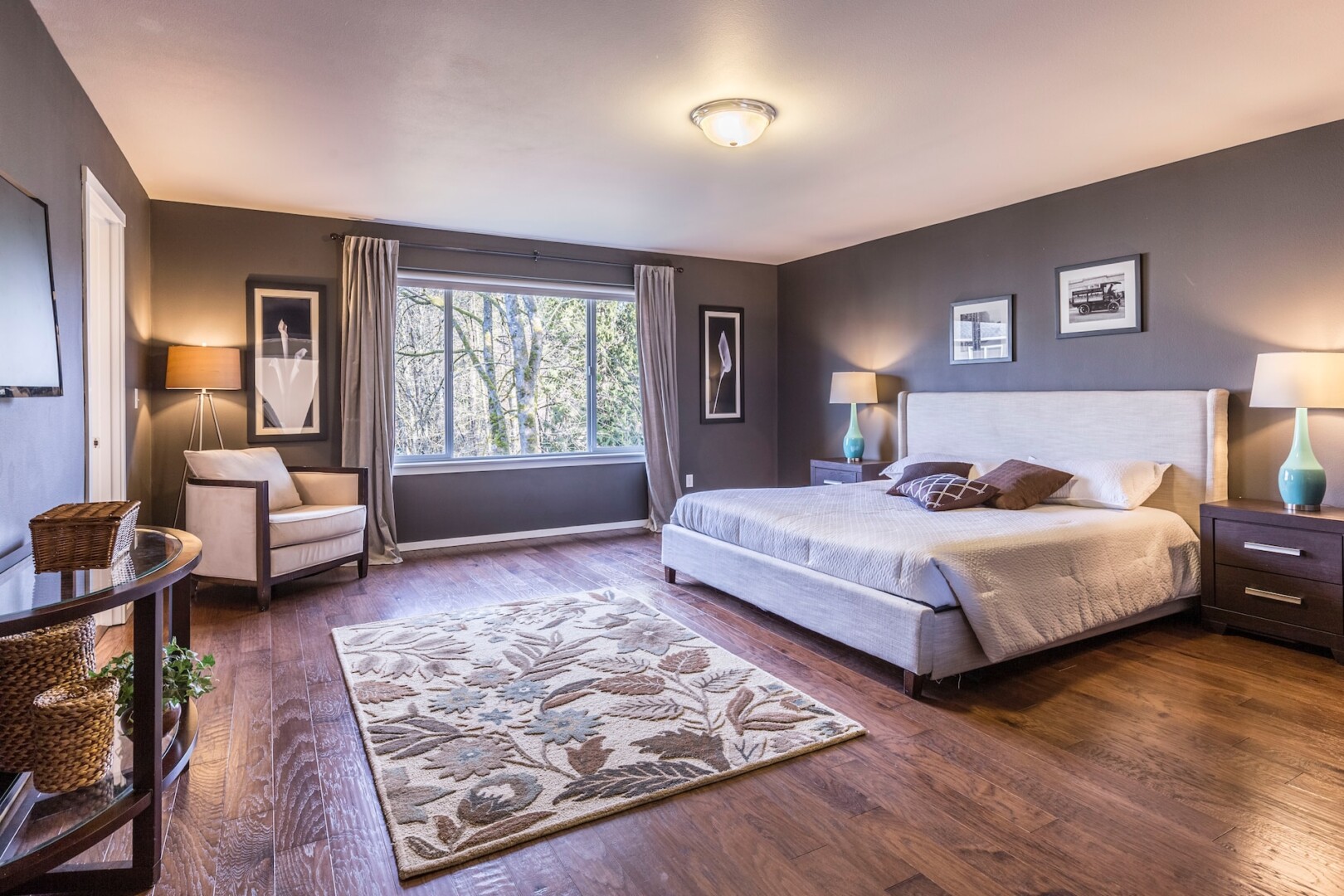Last updated: 05.09.2025
Did you know that around half a million people in the UK live in assisted living facilities? While these residents are often elderly, these properties are designed for anyone who needs additional support at home, including individuals with dementia, physical disabilities, or long-term mental health conditions.
With the soaring demand for assisted living facilities, the investment opportunities are also growing, and more and more property investors are considering this real estate route.
But are assisted living facilities a good investment? Drawing on our in-depth insight and experience as a dedicated property investment company, we’ve examined the key pros and cons to help you make an informed decision about whether investing in assisted living is right for you.
Assisted living property investment guide

Understanding assisted living: What is it and who is it for?
Assisted living properties are residential living arrangements designed to provide assistance and support to individuals who may need help with daily living activities. These facilities aim to promote independence and a high quality of life for their residents, while ensuring they receive the necessary assistance and care.
Key characteristics of assisted living properties typically include:
- Housing: Private or semi-private apartments or rooms offering privacy, comfort, and security.
- Personal care: Help with bathing, dressing, grooming, medication, and mobility as needed.
- Meals: Nutritious meals served in communal dining areas that encourage socialising.
- Activities: Programs to support social engagement, physical health, and mental stimulation.
- Housekeeping: Regular cleaning and maintenance to keep the environment safe and comfortable.
- 24/7 staffing: Staff available around the clock for assistance and emergencies.
- Health services: Access to basic healthcare, therapy, and transportation for appointments.
- Security: Measures in place to ensure resident safety.
Is assisted living the same as a care home?
Assisted living properties and care homes are not the same. Assisted living properties focus on promoting independence and providing assistance with daily living activities, offering private or semi-private living spaces. Care homes, on the other hand, provide a higher level of care and supervision in a shared living environment, often for individuals with complex medical needs.
Although both provide residential care, they vary significantly in terms of support levels, housing arrangements, and the balance between independence and supervision.
From an investment perspective, care homes are considerably more complex. They demand substantial operational expertise due to the need for specialised medical staff, strict regulatory compliance, and higher liability risks. Additionally, many care homes rely on funding from the NHS or local authorities, which can introduce further financial and operational uncertainties. Assisted living properties, while still requiring quality management and care standards, tend to operate with less medical intensity and regulatory burden, making them a different type of investment altogether.

What we like about assisted living investment
Assisted living is becoming an increasingly popular choice for UK property investors, and for good reason. With an ageing population, steady demand, and strong rental income potential, it offers both long-term stability and a meaningful impact. Here’s why more investors are turning to this growing sector.
1. The UK’s ageing population is driving demand
The UK’s population is getting older, and fast. According to the Office for National Statistics, nearly a quarter of the UK population will be over 65 by 2041. And the number of people over 85, the age group most likely to need care, is expected to double by 2035.
But the housing supply isn’t keeping up. This gap is creating a clear opportunity for investors to step in and help fill the shortfall, while potentially benefiting from strong occupancy and rental performance.
2. Steady, reliable rental income
One of the biggest advantages of investing in assisted living is the reliability of the income. Older residents tend to stay in these homes much longer than traditional renters, often between 18 and 30 months, depending on the level of care they need.
They’re also more consistent when it comes to paying rent. Data from Age UK shows that only around 24% of renters aged 65–74 and 23.5% of those 75+ report difficulty paying rent. That makes them a particularly dependable tenant base compared to younger renters.
3. Resilience (even in a downturn)
Senior care is one of those rare sectors that holds up well, even when the wider economy takes a hit. People still need support as they age, regardless of what the markets are doing. That makes assisted living a relatively low-risk, recession-resilient investment.
Care-related property investments in the UK often outperform more traditional sectors like retail and office.
4. Hands-off investment through partnerships
You don’t have to run the property yourself. Many investors choose to partner with experienced care operators who handle everything — from staffing and regulations to resident care. This lets you benefit from the income and long-term growth without getting involved in day-to-day management.
These partnerships are especially useful for first-time investors in the sector or those who want a more passive role.
5. Lower operating costs for individual owners
If you do choose to buy a property directly, there are some cost advantages. Unlike buy-to-let, you often don’t have to worry about things like ground rent, service charges, or building insurance; these are usually covered through the fees residents pay. That means more of the income flows to you.
7. Government support adds stability
Some assisted living properties in the UK operate under long-term leases backed by local councils or NHS funding. These contracts often run for 15 to 25 years, providing reliable rental income, even if the operator changes or exits the business. That built-in security can be a huge plus for investors looking for low-risk, long-term returns.

Assisted living investment profitability
Assisted living can be a profitable investment. With the UK’s ageing population growing rapidly, demand for high-quality care housing continues to outpace supply. This imbalance means investors are seeing consistently high occupancy rates and reliable rental income.
One of the key attractions is tenant stability. Older residents typically stay in assisted living homes for 18 to 30 months, often longer than traditional renters. They’re also more dependable when it comes to paying rent, which makes for a more secure income stream.
Returns are competitive. On average, care-related property investments have delivered annual returns of 5-9% over the past decade, in some cases even outperforming retail or office sectors. Many properties benefit from long-term leases (15–25 years) backed by local councils or NHS funding, adding an extra layer of stability.
Plus, there are hands-off options. Partnering with experienced care providers allows investors to earn passively, while avoiding day-to-day management. For those who buy directly, lower operating costs (like no ground rent or service charges) can mean more income in your pocket.

Areas of consideration with assisted living investment
Assisted living can offer strong, stable returns, but it’s not a one-size-fits-all investment. Before diving in, it’s important to understand the challenges. For owner-operators, running an assisted living facility involves navigating complex healthcare regulations, hiring and retaining skilled staff, and managing high operating costs, from utilities to medical services. These factors can directly impact profitability.
There are also healthcare-related liabilities to consider. Even if you opt for a hands-off model by partnering with an operator, understanding the operational risks remains essential. Staffing shortages, in particular, continue to be a significant issue across the sector.
It’s also a long-term commitment. Returns may take time, and shifting healthcare policies can affect financial performance. Assisted living properties aren’t always easy to sell, so planning your exit strategy upfront is key.
That said, for the right investor, the assisted living investment pros and cons weigh in favour of long-term growth and impact. Thorough research and expert guidance are key to success in this unique property niche.

Maximise returns with assisted living properties & Alesco
Thinking about investing in assisted living properties? The process involves several steps, from finding the right property to finalising the purchase. Even seasoned investors often need expert guidance, and that’s where Alesco comes in. With our extensive experience, deep market insights, and strong understanding of property investment, we’ve helped many investors make confident, informed decisions. You can benefit from our support too.
Partnering with Alesco lets you quickly build a profitable portfolio of assisted living properties by accessing exclusive opportunities from our wide selection. We also assist with crucial aspects like due diligence and navigating the property acquisition process.
Contact us to learn more or discuss your options.

Written by: Ben Whitaker
Experienced professional working in the real estate investments sector. Assisting and advising clients on the acquisition of property across a range of asset classes, with view to achieving robust return on investment.

